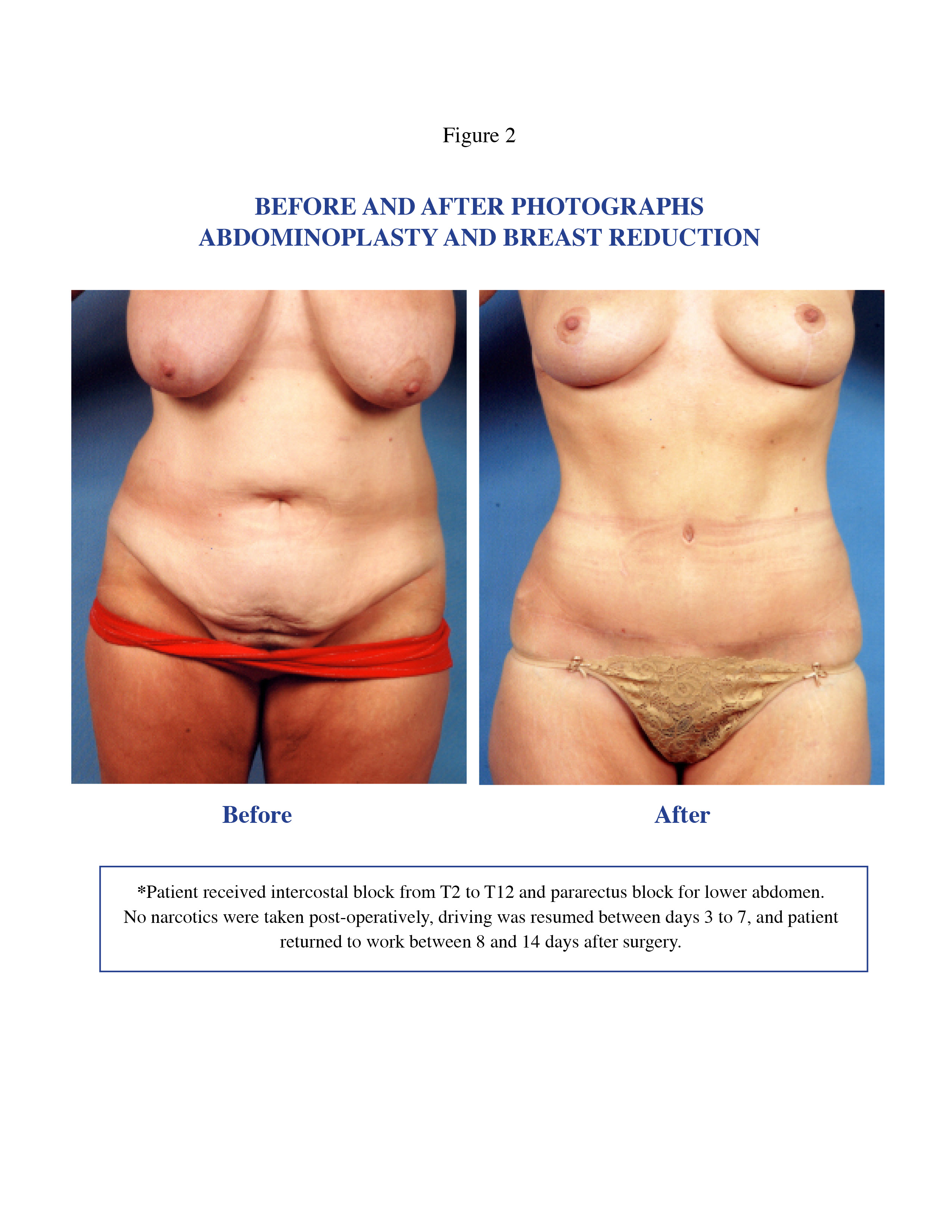Saturday, October 2, 2010
17428
Painless Abdominoplasty: The Efficacy of Combined Intercostal and Pararectus Blocks in Reducing Post-Op Pain and Recovery
Abstract
Background
Management of post-operative pain following abdominoplasty is essential to minimizing recovery. The extended use of narcotics is often unacceptable to patients. Pain pumps1 are inconvenient and add cost. A more reliable method of decreasing post-op pain has been developed using a precise combination of nerve blocks with long-acting local anesthetics.
Patients and Methods
The charts of 209 patients undergoing abdominoplasty alone or in combination with other procedures over a ten year period, were reviewed. The control group (n=20) was defined as receiving no nerve blocks, while the treatment group (n=77) was defined as having a combination of intercostal, Ilioinguinal, iliohypogastric, and pararectus2 nerve blocks, using bupivacaine, tetracaine, and depomedrol3. Intercostal blocks were performed in the posterior axillary line, from T7 to T12, where the lateral cutaneous branches are more superficial4. Recovery room data and patient questionnaires were used to evaluate clinical efficacy. Patient procedures were classified into 4 severity classes for analysis. Abdominoplasty alone was classified as Class I and abdominoplasty with other procedures was classified from II to IV.
Results
Age, BMI and type of procedure(s) were comparable between the two groups. The treatment group had significantly less pain across all severity classes (Class I, p=0.02; Class II, p<0.001; Class III, p<0.001) and required significantly less narcotics (Class I, p=0.057; Class II, p<0.001; Class III, p<0.001) and less time in the recovery room (Class I, p=<0.001; Class II, p<0.05; Class III, p<0.001). Pain scores were significantly lower at home (first 2 days, p<0.001; day 3 to 7, p=0.0059; after first week, p=0.0166) (Figure 1) and patients had significantly less nausea (p=0.0005), took less pain medication (p=0.0034), took less time to reach pain-free state (p=0.0344), resumed driving sooner (p=0.0012), and normal activities significantly sooner (p=0.0087) than the control group. Figure 2 is an overview of a severity Class II patient showing before and after results and recovery time following abdominoplasty and breast reduction.
Conclusion
This is the first study showing successful long-term nerve blocks of all sensory branches associated with abdominoplasty using a combination of intercostal, ilioinguinal, iliohypogastric and pararectus blocks. When this pain is reduced, patients can tolerate combined procedures more easily. This is an important study because prospective patients are not only concerned about the esthetic result, but also their level of pain and length of recovery time.
References:
- Mentz HA, Ruiz-Razura A, Newall G, Patronella CK. Use of a regional infusion pump to control postoperative pain after an abdominoplasty. Aesth Plast Surg 29:415, 2005.
- Inoue S, Takahashi M, Furuya H. Pararectus block for open abdominal surgery. Anesth Analg 104:463, 2007.
- Movafegh A, Razazian M, Hajimaohamadi F, Meysamie A. Dexamethasone added to lidocaine prolongs axillary brachial plexus blockade. Anesth Analg 102:263, 2006.
- Davies B, Gladstone RJ, Stibbe EP. The anatomy of the intercostal nerves. J Anat 66:323, 1932.


